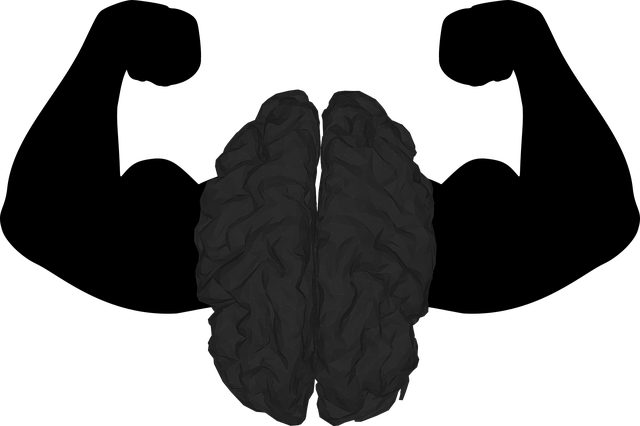Lakewood Adolescent and Teen Therapy (LATT) emphasizes resilience as a cornerstone of adolescent well-being, utilizing the RFM model (Recovery, Flexibility, Mastery). Through structured programs, they equip teens with coping strategies for stress, anxiety, and emotional challenges. This holistic approach includes risk assessments, evidence-based techniques like mindfulness and cognitive reframing, empathy-building exercises, and a comprehensive evaluation system measuring success in resilience-building initiatives. LATT's rigorous methods not only enhance individual client outcomes but also contribute valuable insights to the broader mental health community.
“Resilience is a vital asset for adolescents navigating life’s challenges. This article explores the power of RFM (Recovery, Flexibility, and Mastery) exercises in fostering youth resilience. We delve into how Lakewood Adolescent and Teen Therapy integrates these practices, offering a step-by-step guide to implementation. From understanding RFM’s role in adolescent development to measuring success through evaluative methods, this comprehensive overview highlights the impact of these exercises on building resilience, emphasizing Lakewood’s therapeutic approach.”
- Understanding RFM and Its Role in Resilience Building for Adolescents
- Implementing Resilience Exercises in a Therapeutic Setting: A Step-by-Step Guide (Focus on Lakewood Adolescent and Teen Therapy)
- Measuring Success: Evaluating the Impact of RFM Exercises on Youth Resilience
Understanding RFM and Its Role in Resilience Building for Adolescents

Resilience is a critical skill for adolescents to cultivate, especially in navigating the challenges and stressors they face during this formative period. This is where the RFM (Recovery, Flexibility, and Mastery) model comes into play, offering a structured approach to building resilience. RFM focuses on three key components: recovery from adversity, flexing mental muscles to adapt to change, and mastering personal challenges. At Lakewood Adolescent and Teen Therapy, we recognize that adolescence is a time when individuals often experience heightened levels of stress, anxiety, and emotional turmoil. Implementing RFM principles allows our therapists to guide teens in developing effective coping strategies and fostering a sense of empowerment.
The role of RFM in resilience building goes beyond simply teaching coping mechanisms; it equips adolescents with the tools to navigate not only their personal struggles but also the broader societal expectations and demands placed on them. By integrating self-care practices, burnout prevention strategies for healthcare providers, and public awareness campaigns development into therapy sessions, we holistically support teens in building resilience. This comprehensive approach ensures that Lakewood Adolescent and Teen Therapy provides adolescents with the skills and resources necessary to thrive in a complex and demanding world.
Implementing Resilience Exercises in a Therapeutic Setting: A Step-by-Step Guide (Focus on Lakewood Adolescent and Teen Therapy)

Implementing resilience exercises in a therapeutic setting, such as Lakewood Adolescent and Teen Therapy, involves a structured approach to empower young individuals with coping mechanisms for life’s challenges. Here’s a step-by-step guide tailored for this unique environment. First, conduct a comprehensive Risk Assessment for Mental Health Professionals to identify potential risks and individual needs. This foundational step ensures safety and guides the selection of appropriate exercises.
Next, incorporate exercises that foster emotional healing processes. Techniques like mindfulness meditation, cognitive reframing, and exposure therapy can help teens manage stress, reframe negative thoughts, and confront fears in a safe environment. Additionally, embed empathy building strategies throughout the exercises to strengthen connections between therapists and clients, fostering a sense of understanding and support. By combining these methods, Lakewood Adolescent and Teen Therapy can create a robust framework that not only builds resilience but also enhances overall well-being for its young clients.
Measuring Success: Evaluating the Impact of RFM Exercises on Youth Resilience

Measuring success is a critical aspect of any initiative aimed at enhancing resilience, and Lakewood Adolescent and Teen Therapy (LATT) has pioneered effective methods to evaluate the impact of RFM exercises on youth. The process involves a multi-faceted approach that goes beyond simple self-reporting. LATT utilizes a combination of standardized assessments, observational data, and feedback from both participants and facilitators to gauge progress. This comprehensive strategy ensures that the RFM exercises are not only reaching their intended goals but also making a tangible difference in the lives of young individuals.
The Mental Health Awareness community has long recognized the importance of resilience-building skills, and LATT’s evaluation methods provide valuable insights into the effectiveness of these programs. By incorporating Mental Wellness Journaling Exercise Guidance and focusing on Coping Skills Development, RFM exercises can be tailored to meet the unique needs of each participant. Through this rigorous evaluation process, LATT not only identifies what works but also shares best practices with the wider mental health community, contributing to a more robust and evidence-based approach to youth resilience building.
The implementation of RFM exercises in Lakewood Adolescent and Teen Therapy has proven to be a powerful tool for building resilience among adolescents. By understanding the role of RFM, following a structured guide to its integration, and evaluating its impact, therapists can effectively foster adaptability, coping skills, and overall well-being in their young clients. This holistic approach ensures that youth are equipped to navigate life’s challenges with strength and resilience.








